Preparing for GCSEs
guidelines for
home-schooling parents
keen to secure a Christian classical education for their children
Latin
Study recommended: 4 years,
6 hours per week (incl. lesson time).
Exam board: OCR. View
specification
for the new 9-1 GCSE syllabus.
The Entry Code for our students sitting this exam in 2026 is J282 F.
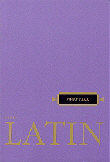 Preliminary
textbooks: The best introduction to Latin for Catholic students aged
11 upwards is
Henle
First Year Latin (with accompanying
Grammar) by Fr Robert Henle SJ.
Although the focus is on classical Latin, it provides a useful introduction to ecclesiastical
Latin as well, including a line-by-line presentation of the Pater Noster
and Ave Maria. Perfectly paced and packed full of exercises, its 500
pages normally take two years to complete. Take a peek on
Amazon. Don't be put off this superb series by the American ordering of
the grammatical cases. It takes only a few minutes to learn how to read the
layout in a British manner, and pupils learn this simple skill right at the
beginning of our course. Cover all four volumes if you really wish to get to grips with Latin. Broadly
speaking, they map to the British exam system as follows:
Preliminary
textbooks: The best introduction to Latin for Catholic students aged
11 upwards is
Henle
First Year Latin (with accompanying
Grammar) by Fr Robert Henle SJ.
Although the focus is on classical Latin, it provides a useful introduction to ecclesiastical
Latin as well, including a line-by-line presentation of the Pater Noster
and Ave Maria. Perfectly paced and packed full of exercises, its 500
pages normally take two years to complete. Take a peek on
Amazon. Don't be put off this superb series by the American ordering of
the grammatical cases. It takes only a few minutes to learn how to read the
layout in a British manner, and pupils learn this simple skill right at the
beginning of our course. Cover all four volumes if you really wish to get to grips with Latin. Broadly
speaking, they map to the British exam system as follows:
- Volume 1 - GCSE
- Volume 2 - AS Level
- Volume 3 - A level
- Volume 4 - University (first year)
NB. These books can also be purchased in digital form from
Google Books.
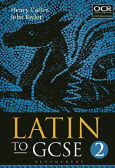 Exam-preparation textbooks: In their
final year, students will prepare for the GCSE exam (course J282) using the following texts:
Exam-preparation textbooks: In their
final year, students will prepare for the GCSE exam (course J282) using the following texts:
Set Texts: Students for the 2026 exam study the following set texts:
- Prose Literature B: Cambridge Latin Anthology, Messalina & Avunculus meus
- Verse Literature B: Virgil's Aeneid, Book 1, lines 12-123
Classical
Greek
Study
recommended: 4 years, 5 hours per week
(incl. lesson time). It's best to wait
until children have completed at least one if not two years of Latin before
starting Ancient Greek. This will allow them to grasp the novelties of
classical grammar (conjugations, declensions, etc) before embarking on a new
language. Don't be deterred by the strange-looking Greek alphabet; children love
learning the Greek letters and will quickly master them.
Exam board: OCR. See the
specification
for the new 9-1 GCSE syllabus. The Entry Code for our students sitting this exam
in 2026 is J292 A.
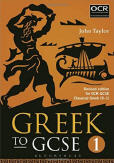 Textbooks:
We use the following textbooks, for which both paperback and Kindle editions are
available.
Textbooks:
We use the following textbooks, for which both paperback and Kindle editions are
available.
Students should also download the
Defined and Restricted Vocabulary.
Set Texts: Students for the 2026 exam study the following set texts:
- Prose Literature A: Tales from Herodotus, sections XIa, XII, XIII, XIVb
- Prose Literature B: Xenophon's Anabasis, Book 1, chapter 8 (excluding lines 8-10)
 Typing
Greek:
Type Greek is a free online tool for typing Greek. Enter one of the
symbols ( ) \ / = | after letters to add breathings, accents or iota
subscripts. Copy the text into a word processor to preserve it.
Lexilogos
is an alternative online tool for students who have difficulty typing.
Typing
Greek:
Type Greek is a free online tool for typing Greek. Enter one of the
symbols ( ) \ / = | after letters to add breathings, accents or iota
subscripts. Copy the text into a word processor to preserve it.
Lexilogos
is an alternative online tool for students who have difficulty typing.
Mathematics
Study recommended:
4 years, 6 hours per week (incl. lesson time). Students should have mastered basic arithmetic and know
their multiplication tables thoroughly by the age of 11.
Exam board: Edexcel.
You may choose either the well-established
International GCSE or the new
9-1 GCSE (Higher), now just as challenging.
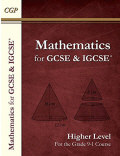 Textbooks:
We use the following textbooks, which can be purchased in either paperback
or Kindle version.
Textbooks:
We use the following textbooks, which can be purchased in either paperback
or Kindle version.
Calculators:
Each pupil will require a scientific calculator. Suitable models are the
Casio FX-85GTX and the
Casio
FX-991EX. To learn how to use these, students
should
watch these
Help
videos. Graphical calculators are also permitted in the GCSE exams, the
recommended model being the
Casio CG50 (aka Prizm); see the Maths section in our A Level page for
further details.
Further Mathematics
Study recommended:
1 year, 8 hours per week (incl. lesson time). Before commencing with this course
students should have completed their ordinary GCSE Maths studies and have
obtained (or be expected to obtain) at least a grade 7 (or A under the old
grading scheme).
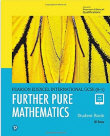 Exam board: Edexcel. See
Specification.
Exam board: Edexcel. See
Specification.
Textbooks: We use Ali Datoo's
Further Pure Mathemathics book (see right).
Also useful is this
IGCSE Further
Mathematics website.
Calculators: For students who hope to go on
to study A Level maths, this would be a good time to invest in a graphical
calculator. I highly recommend the
Casio CG50 (Prizm).
See our
A Level page for further details.
English Language
Study recommended: 2 years, 5
hours per week (incl. lesson time). This course would be ideal for students aged
13-15, but students as young as 11 would benefit from it, even though they don't
intend to sit the GCSE exam immediately on completion of the course.
Exam board: Edexcel. IGCSE
English Language (Specification A). See
Specification.
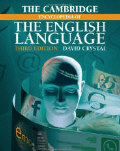 Textbooks:
We use the following text books, which can be purchased in either paperback or
Kindle version. Students will need the first of these, the Student Book, to
begin our course.
Textbooks:
We use the following text books, which can be purchased in either paperback or
Kindle version. Students will need the first of these, the Student Book, to
begin our course.
We also cover
Intermediate English
Grammar in our classes and occasionally draw on David Crystal's
outstanding, beautifully illustrated
 Preliminary
textbooks: The best introduction to Latin for Catholic students aged
11 upwards is
Henle
First Year Latin (with accompanying
Grammar) by Fr Robert Henle SJ.
Although the focus is on classical Latin, it provides a useful introduction to ecclesiastical
Latin as well, including a line-by-line presentation of the Pater Noster
and Ave Maria. Perfectly paced and packed full of exercises, its 500
pages normally take two years to complete. Take a peek on
Amazon. Don't be put off this superb series by the American ordering of
the grammatical cases. It takes only a few minutes to learn how to read the
layout in a British manner, and pupils learn this simple skill right at the
beginning of our course. Cover all four volumes if you really wish to get to grips with Latin. Broadly
speaking, they map to the British exam system as follows:
Preliminary
textbooks: The best introduction to Latin for Catholic students aged
11 upwards is
Henle
First Year Latin (with accompanying
Grammar) by Fr Robert Henle SJ.
Although the focus is on classical Latin, it provides a useful introduction to ecclesiastical
Latin as well, including a line-by-line presentation of the Pater Noster
and Ave Maria. Perfectly paced and packed full of exercises, its 500
pages normally take two years to complete. Take a peek on
Amazon. Don't be put off this superb series by the American ordering of
the grammatical cases. It takes only a few minutes to learn how to read the
layout in a British manner, and pupils learn this simple skill right at the
beginning of our course. Cover all four volumes if you really wish to get to grips with Latin. Broadly
speaking, they map to the British exam system as follows: Exam-preparation textbooks: In their
final year, students will prepare for the GCSE exam (course J282) using the following texts:
Exam-preparation textbooks: In their
final year, students will prepare for the GCSE exam (course J282) using the following texts:



